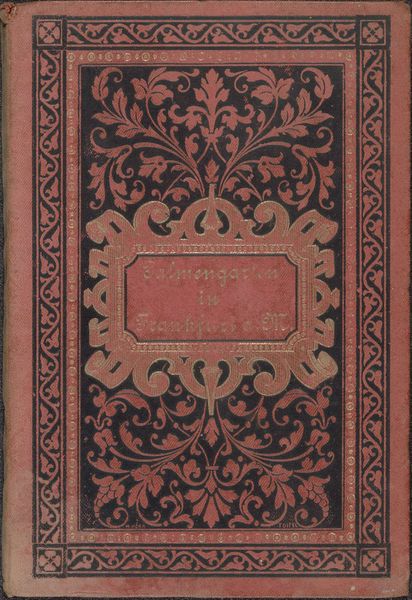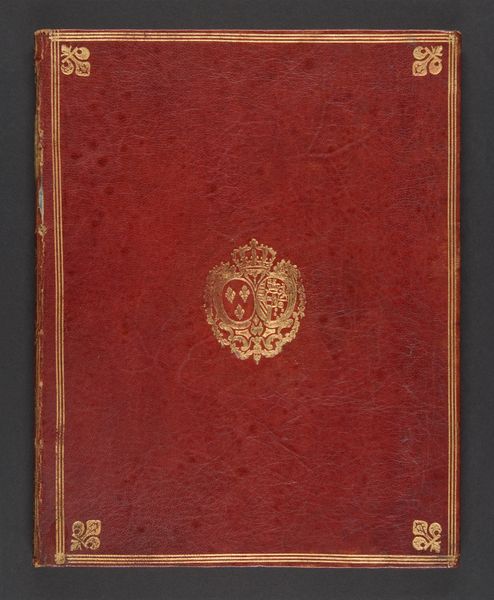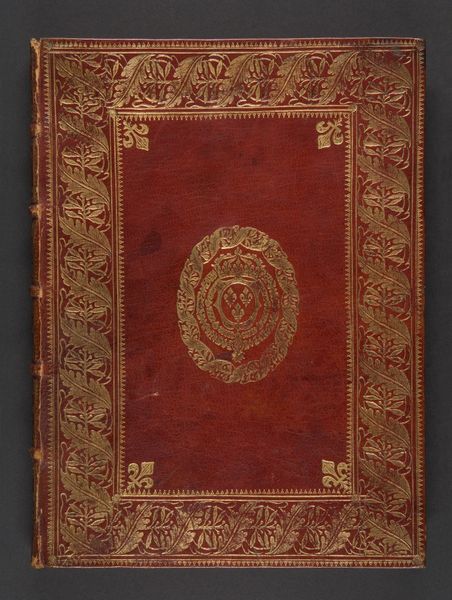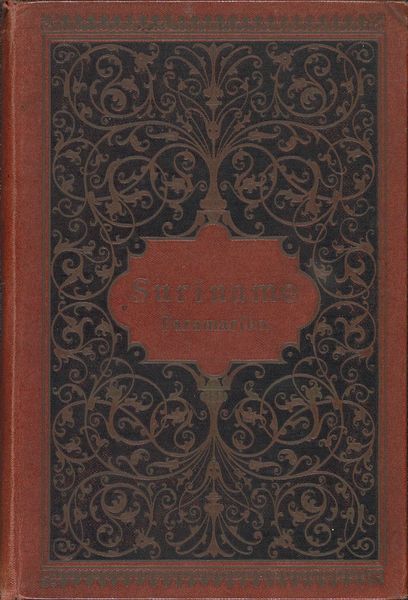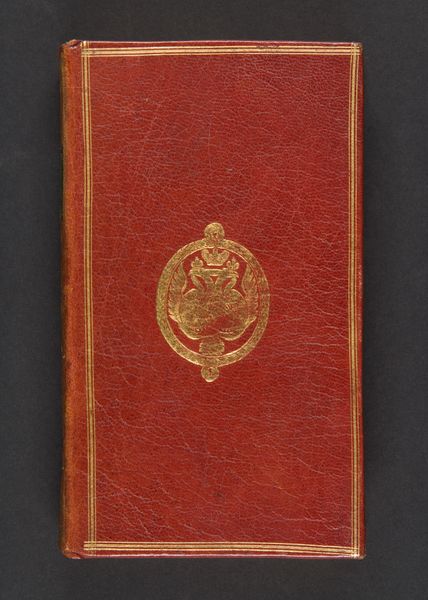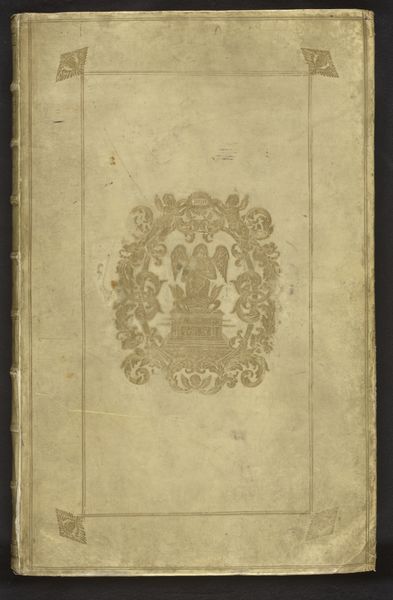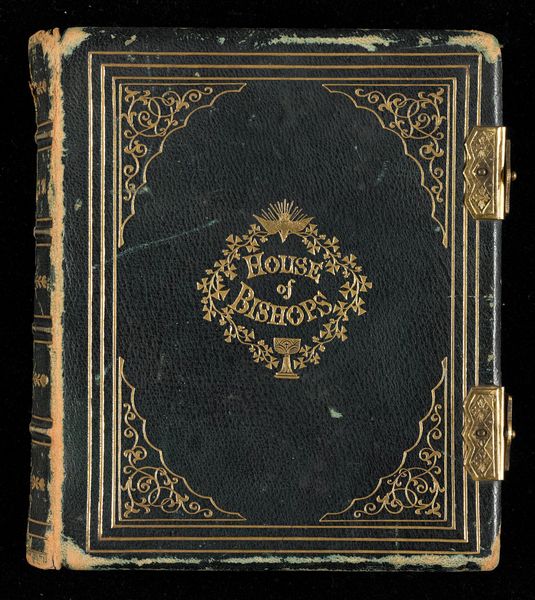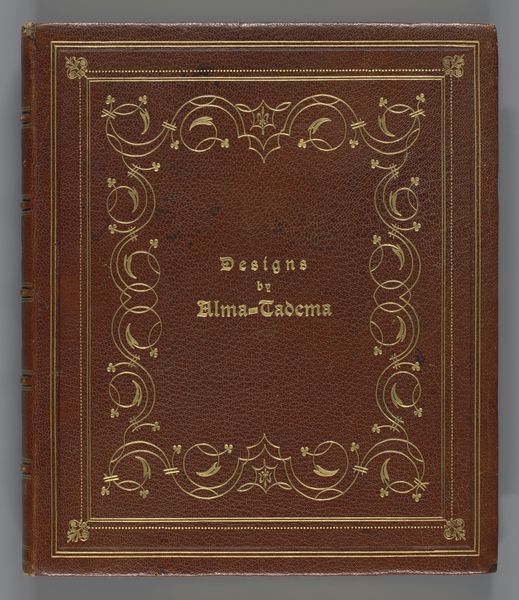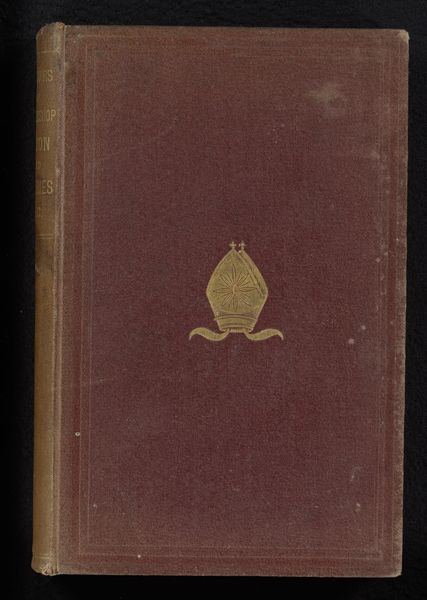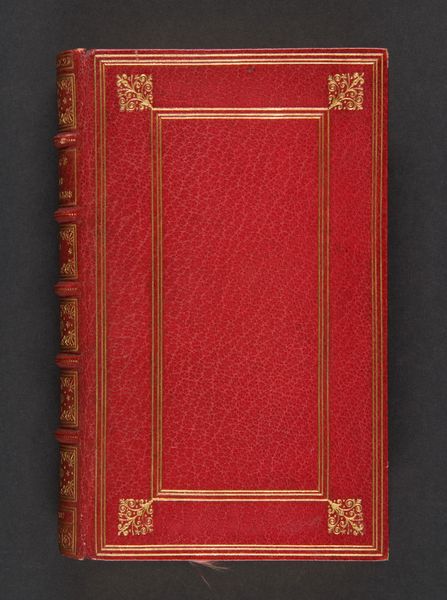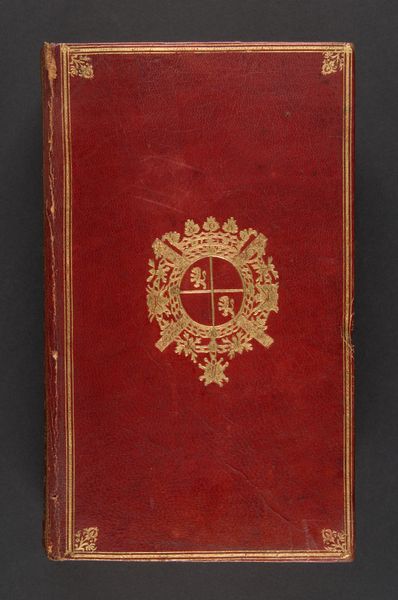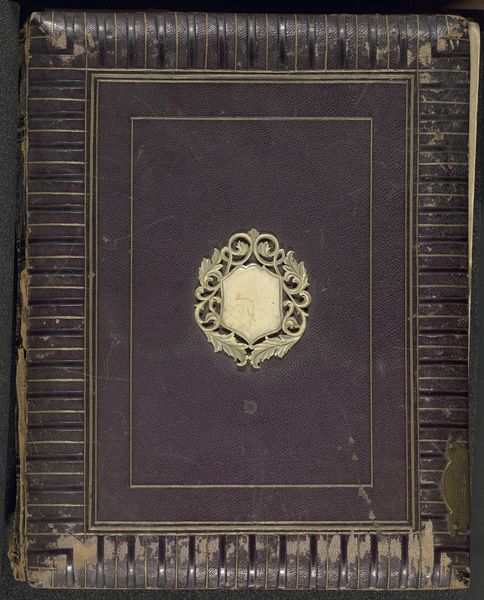
graphic-art, textile
#
graphic-art
#
natural stone pattern
#
man-made pattern
#
textile
#
geometric pattern
#
subtle pattern
#
ethnic pattern
#
organic pattern
#
repetition of pattern
#
vertical pattern
#
pattern repetition
#
decorative-art
#
layered pattern
Dimensions: height 309 mm, width 238 mm, thickness 18 mm
Copyright: Rijks Museum: Open Domain
Editor: So, here we have "Goethe's Herman en Dorothea" from 1885, a graphic art piece currently housed in the Rijksmuseum. It seems to be a book cover or similar object. There’s a certain formality to the cover's design and pattern work that strikes me. What do you make of it? Curator: I see a fascinating example of how the decorative arts often reflected social and political ideals in the late 19th century. The emphasis on pattern, order, and classicism was no accident. Germany, recently unified, was forging a national identity partly through embracing a sense of cultural heritage. This cover, for Goethe's work, speaks to that effort. Do you notice the details in the pattern itself? Editor: Now that you mention it, there’s an intricate mix of geometric and organic forms in the bordering patterns, almost trying to blend the mathematical and the natural. The gold lettering seems to want to convey something stately. Curator: Precisely! The textile arts and graphic design like this were incredibly influential. These weren’t just "pretty" designs; they reinforced national pride, promoted ideas of German cultural superiority, and reached wide audiences. Consider the role of museums in exhibiting such pieces at the time. Who was this imagery aimed at and what did its design accomplish in its day? Editor: It’s incredible to consider the book cover's purpose reaching beyond aesthetics. It's as though the cover wanted to promote more than just reading! Curator: And, more than that, it actively helped define who the public was intended to be through consumption and engagement. Editor: Thanks, seeing this as part of a cultural and political statement really enriches my understanding. Curator: Absolutely, thinking of art within historical and cultural context enables us to examine both design and message in a richer and more connected way.
Comments
No comments
Be the first to comment and join the conversation on the ultimate creative platform.
